Pass Labs INT-25
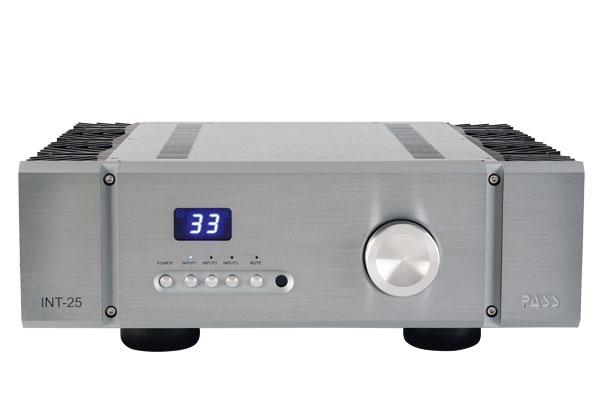
 As a microcosm, the hi-fi industry more than any other is littered with examples of people that thought: “Yeah, I could do that” and then set about producing their own version of commercially produced components on their kitchen table. If only car manufacturers or the consumer electronics market followed suit, the world might be full of more interesting products, able to specialise in ever more imaginative ways.
As a microcosm, the hi-fi industry more than any other is littered with examples of people that thought: “Yeah, I could do that” and then set about producing their own version of commercially produced components on their kitchen table. If only car manufacturers or the consumer electronics market followed suit, the world might be full of more interesting products, able to specialise in ever more imaginative ways.
Take US-based amplifier specialist Pass Labs for example. The brainchild of electronics whiz Nelson Pass and his mate Mike Burley, the company based in Auburn, California, first came into being in 1991 when the pair combined three home-constructed CNC machines with a hunger to produce their own single-ended Class A amplifier design. The resulting mono-block Aleph O was rated at 70W into 8ohm, and was unique at the time for using three gain stages of power Mosfets, including a push-pull output stage biased by a big constant current source. The amp quickly became popular and in a typical ‘mom-and-pops’-type business model, Pass found himself having to employ neighbour Elena Tong to help run the business side of things.
Jump forward 30 or so years and little has changed. Though production has moved from Pass’ garage to a dedicated factory, Tong still runs things behind the scenes, leaving Nelson to concentrate on producing amplifiers with his own uniquely singular vision.
Known affectionately as ‘Papa’ within the online DIY community in which he started out, Pass had shown an interest in innovating amplifier design some 15 years before Pass Labs came into being. Describing himself as primarily a circuit topologist, he explains: “I like very simple topologies, so the simpler you can make an amplifier, the more likely there is to be good correspondence between the sonic performance and what you measure on a bench.”
Coming back to the current day, Pass’ dedication to doing things his own way remains as undimmed as ever and in the INT-25 we have an integrated that keeps things incredibly simple. Consequently, fripperies such as digital inputs, network functionality and even an onboard phono stage are completely eschewed. Instead we have a line-only integrated that sticks to the basics: a Class A power amplifier, an FET-based preamp and... well, that’s it. This is a conduit that slots in rather neatly between your sources and speaker, pure and simple. Those of you asking why such a simple product demands such a high price are advised to skip to the Sound quality section. Otherwise, read on...
As the entry-level offering from the INT series, the INT-25 is rated at 2x 25W power output into 8ohm loads, although in reality it vastly exceeds this to the tune of 2x 65W/8ohm and 2x 120W/4ohm – with headroom to accommodate 75W, 147W and 281W into 8, 4 and 2ohm loads. Other members of the Class AB range include the more powerful INT-60 (£8,750, 2x 60W) and INT-250 (£11,500, 2x 250W). All three models come in a stylish silver finish, and though the INT-25 lacks the distinctive circular, blue-lit meter of its siblings, it is nonetheless still a very attractive proposition indeed.
Controls are pleasingly minimal with just a 63-step volume dial, a trio of input selectors and mute and power buttons visible on the front fascia. A blue LED panel provides a numerical volume indicator, while smaller LEDs highlight which input has been selected. Around the back, socketry is equally sparse. And when we say sparse, we really do mean it. Chunky loudspeaker binding posts equipped to handle spade, banana plugs and bare-wire connection are partnered by a trio of line-level RCA inputs and that’s about your lot.
Sitting on four feet, the chassis is reasonably large with two side-mounted heatsinks conferring a slightly industrial feel to an otherwise sophisticated design. Bevelled edges on the thick brushed aluminium front plate frame hint at the design purity that’s continued under the hood. The preamp is a simplified single-ended version of the balanced JFET circuit that’s employed in the pricier INT-60, while the elegant two-transistor Class A FET power amp has been passed on from Pass Labs’ XA-25.
The good news is that parsimonious though the quoted power rating might appear, owners of particularly sensitive speakers need not be concerned: the conservative spec merely denotes the amp’s Class A reach, determined by its standing bias current. In reality, and ably assisted by a substantial power supply, it’ll deliver plenty more grunt as the INT-25 stretches its legs into Class AB territory.
As you might expect from an amp that’s so seemingly light on features, setup is an absolute breeze. An equally minimalist remote control is bundled. As it’s the same one you’ll find with higher-specced models further up the range, it has a number of buttons – balance and passthrough for example – for features that don’t actually appear on the INT-25. It’s also worth noting, that this is a particularly warm-running integrated and so consequently will need to be placed somewhere with sufficient ventilation. Pass Labs recommends minimum clearance of at least 6in.
Sound quality
The INT-25 is an effortless, unfatiguing listen. There’s no feeling of details being glossed over or eschewed in favour of creating an unnatural impression of warmth. Regardless of music type, source or format, the sound reflects the look of the chassis: succinct and clean, resolving musical minutiae with finesse. Hyperbolic claims from hi-fi manufacturers are two a penny and usually to be taken with a sizable handful of salt, but in the INT-25’s case, Pass Labs’ assertion that it: “breathes new life into music” almost sells this integrated short. Any concerns about that 25W power output not being enough are quickly allayed as it powers through percussion and replicates basslines with bombast like something offering two or three times the heft. In fact, there’s a rich, velvet quality to the low end that’s every bit as appetising as the treble is acrobatic and full of nuance. In case you haven’t already guessed, we rather like it.
Johannes Pramsohler and Ensemble Diderot’s recording of Montanari’s Violin Concertos exhibits a seductive liveliness that helps emphasise the composition’s overall jollity as the harpsichord and violin positively dance from the speakers. A piece of music such as this demands deft handling and transient ability when it comes to dynamic peaks and that’s precisely what is dished up. While the performance could never be considered rowdy in any way, neither is it shy and retiring. Instead it’s even handedness ensures impeccable levels of cool, calm control.
Switching to an MQA stream of Moby’s God Moving Over The Face Of The Waters from Tidal, the INT-25 remains firmly in control throughout. Though there’s nothing especially inventive about Moby’s mix, with the integrated feeding our three-way floorstander, the conflicting light and dark as the sweet-sounding strings face off against the deep, surging bass, things still manage to sound layered and involving.
Pantera’s Domination highlights just how impressive the scale is that it is able to unleash. The pounding kick drums hit hard and sound huge, while the reverb-heavy mix grips the loudspeaker’s woofers with authority dragging the low-frequencies ever deeper to unveil the sub-bass that lies beneath the bass.
Starting with a walking blues bassline, gently brushed hi-hats and a vibrato guitar solo, Al Kooper and Mike Bloomfield’s Albert’s Shuffle is a revelation. The tone of the guitar is startling, with the picked notes given a piercing leading edge combined with textured highs. Then as the Hammond organ, ondioline and horns get in on the act, it quickly becomes clear that each is afforded their own distinct sound and space, precisely located within a pleasingly deep and wide soundstage. There’s no mistaking the natural groove of a pack of musicians locked into the moment having a thoroughly good time and we can’t help but feel the same.
Conclusion
There’s an obvious and quite sizable elephant in the room when it comes to the price of the INT-25 and while it’s certainly not exactly cheap, those that can afford to stretch their purse strings far enough will not be disappointed in their investment. It has the required power to both comfortably feed larger floorstanders or make standmounts sound considerably bigger than they actually are. Admittedly, there are no digital inputs and many of the fancy features that you’ll find on far cheaper amps as a matter of course have been neatly side stepped. If the result of keeping things simple is as stunning as this, we can’t help wonder why anyone would consider looking elsewhere. HFC
DETAILS
Product: Pass Labs INT-25
Type: Integrated amplifier
FEATURES
● Quoted power output: 2x 25W (8ohm)
● 3x RCA line-level inputs
 |
Inside this month's issue: Arcam Radia A25 integrated amp, iFi Audio iDSD Diablo 2 DAC/headphone amp, Eversolo DMP-A8 streamer/DAC/preamp, Line Magnetic LM-845IA valve amp, Record Store Day Spring Drop, standmount loudspeaker Group Test and much, much more
|

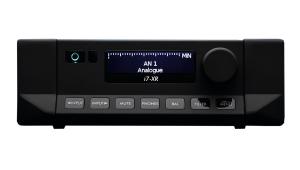
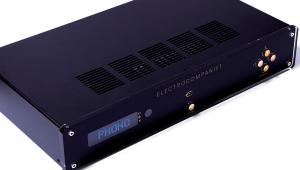
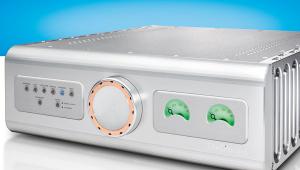
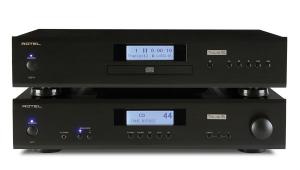
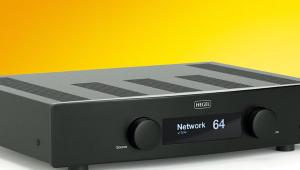
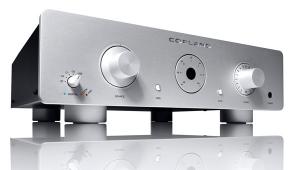




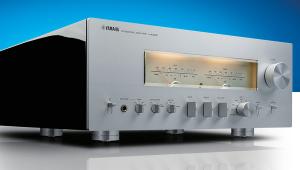
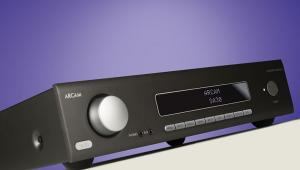

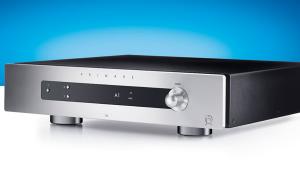
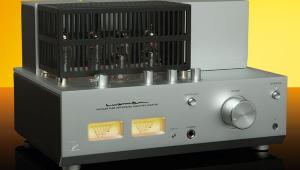
































.jpg)



